“Comics have been inspiring other forms of art … and have become part of our culture.”
Jimmy Palmiotti has been a mainstay in the comic book and graphic novel world for over 20 years. He’s a multi-award-winning writer who has experience in both the mainstream arena, with Marvel, D.C., and Image Comics, as well as with the independents, such as Dark Horse and IDW Comics. He has been a partner in two independent comic book companies: Event Comics, with Joe Queseda, where they created Ash, and Blackbull Press. Not to mention that he has created and successfully crowd-funded five separate graphic novels via Kickstarter, and also has in impressive body of work writing for TV, film, and video games.
Jimmy is the co-creator and current writer of Painkiller Jane from Marvel’s Icon imprint, which was adapted into a television series that aired for one season on the Sci-Fi Channel; the writer for Marvel’s Daredevil: Dark Nights; and on All-Star Western and Harley Quinn for D.C. Comics. He has also recently adapted Hugh Howey’s novel Wool into a graphic novel.
Jimmy is a frequent collaborator with fellow writer Justin Gray, and recently married his longtime sweetheart, Amanda Conner, an artist who has also worked with Jimmy on various projects.
I was first properly introduced to Jimmy’s work in 2002 through The Pro and then Monolith in 2004. I’ve been a fan ever since. Jimmy was gracious enough to take time out of his busy schedule to do an interview for the readers of Cultural Weekly.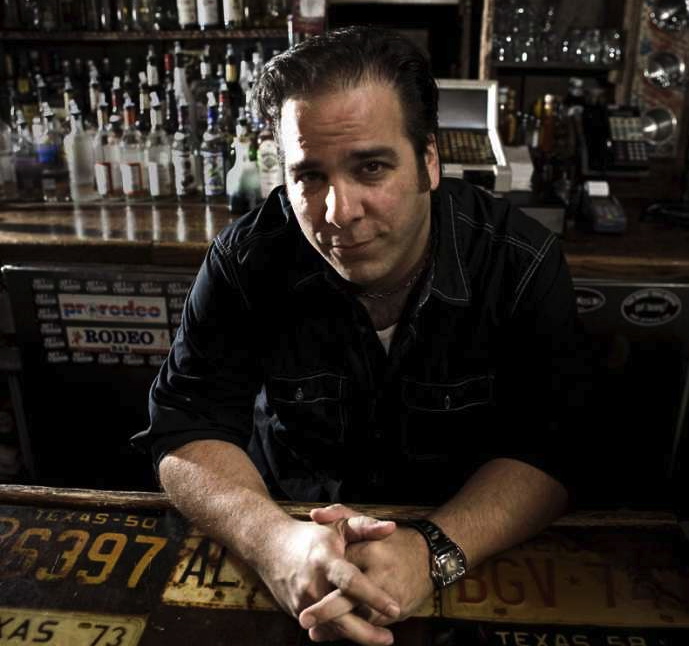
John Kost: Last week I asked you if Comics were the art form of the 21st century – a theory offered up in a recent Cultural Weekly article by Allen Rubenstein. You replied that “they always have been.” Could you elaborate on that?
Jimmy Palmiotti: Other than Jazz, comics are one of the original art forms to come from this country and this form of visually graphic storytelling breaks language barriers, telling stories in a self-contained way where a reader uses their imagination in the process. Comics have been inspiring other forms of art along the way and have become part of our culture. I just cannot think of another art form that has done this so successfully. People of all ages connect with this form of art and I think most important, are trying their hand at it. It is an art form that spans genres and has some of the most diverse representations.
JK: Can you give some examples of comics and graphic novels, currently flying under the radar, that deserve to be in conversations about the arts and culture?
JP: Paul Popes Battling Boy is a kinetic labor of love that explodes from page to page. I love the energy it puts out there and the format is refreshing. I am also enjoying the translated collected editions of the Torpedo books produced published by IDW. These are a series of trades that follow the adventures of a hit man in New York during prohibition. The art and storytelling are just amazing and one of the best adult books out there at the moment. I am also enjoying the collected Rasl hardcover collection by Jeff Smith. Fans of his Bone series will just love this more mature experiment he is presenting here. It’s a wonderful blend of science fiction, suspense and action that I haven’t seen from Jeff before. I simply love it. Last, I would like to point out the Judas Coin graphic novel by Walter Simonson. Maybe it’s not under the radar, because it features Batman, but the artwork is stunning and deserves some real attention. I could go on and on with this list.
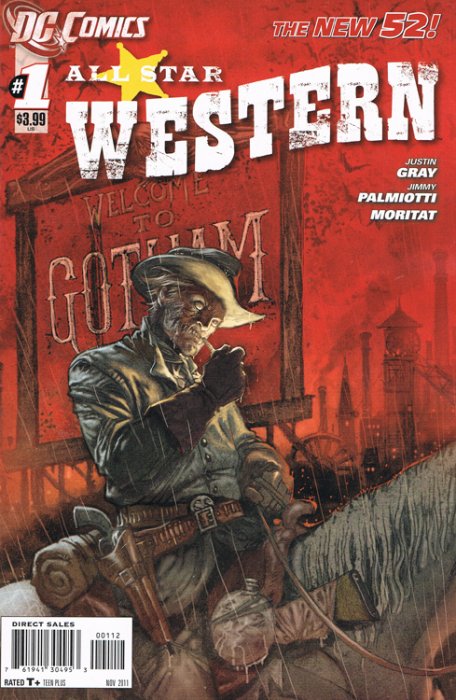
JK: Do you ever think of yourself not only as a writer but as a creator of culture as well?
JP: I think of myself as a creator before writer because I have been involved in so many aspects of graphic storytelling over the years in comics, games, TV shows and film. What I try to do is world building with each and every creator owned character and then get down to the nuts and bolts of the story when I am scripting. I’m just happy to be creating anything that people enjoy. It’s up to the audience to put the labels on what I do.
JK: How did you make the transition from inker to writer, or were you always writing but waiting to be published?
JP: I wrote and created comics for my company Event Comics back in the 90’s while inking for the majors, with my partner Joe Quesada. It wasn’t until 2001 that I decided I taken the inking as far as I could and started taking on more writing, working on three titles for DC comics. These were The Monolith, 21 Down and The Resistance, all with co-writer Justin Gray. Honestly, The inking part of my job had no more challenge left for me, so I completely dropped doing it anymore. With writing, my current challenges are all over the place because I can apply them to different genres and formats. Inking was just inking. Not very satisfying for me, and again, the challenge part was completely gone. I was bored, so I moved. For me, unless there is a risk or a challenge or the opportunity to do something new and different, I wont take it on. I will say that over the years, before I became known as a writer, I have always been writing in my head. Even when Joe and I created Marvel Knights, I was giving ideas to my guys for the books. I think it was always in my blood.
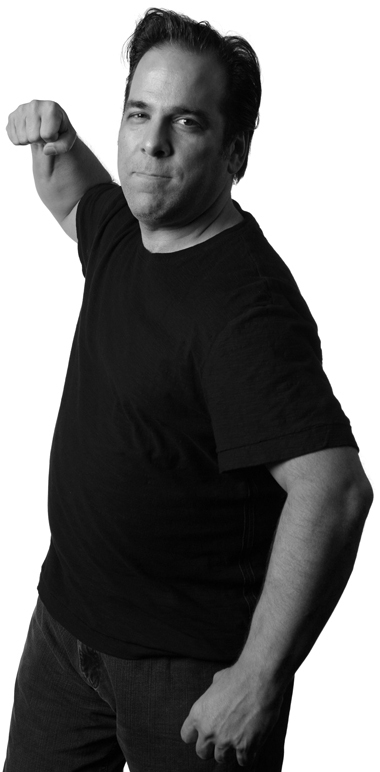
JP: I loved the grassroots nature of Kickstarter and that I would be dealing directly with the fans, creating a relationship with them. I have success for a number of reasons, first being that I have a following and second I am offering something people want and not throwing caution to the wind. It is a business to me and like any good business, my biggest goal is customer satisfaction. I keep the amount needed reasonable, offer exclusive content and awards, and most important, communicate with the people supporting my project. I will be doing Kickstarter projects for the foreseeable future and even though the idea of packing and mailing 900 packages at a time is a daunting one, I love the connection to the people that are supporting my madness.
JK: You often co-write with Justin Gray. How does your creative partnership with Justin work?
JP: It’s quite simple really. We get the gig, analyze it, talk about our ideas together and find something we can both agree on and then decide who is going to make the first pass on the script. After that we volley the script back and forth till we are happy with it and send it to our editor and wait for their reaction and notes. A lot of the time our schedules determine the sit down and type part of the process We are best friends and this is a fun procedure. We argue, we analyze and dissect each other’s work, but that’s how a good partnership works. We both understand each other’s strengths.

Hugh Howey’s Wool
JK: How did you get tapped to adapt Hugh Howey’s novel Wool into a graphic novel?
JP: We were offered the chance to be involved by the guys at Cryptozoic, met the crew at Jet City and we jumped at it. There were a lot of behind the scenes before they picked us for sure, but we were happy to be working on such a wonderful novel. Justin read Wool and was raving about it way before we got the call to adapt it. It was a quick and easy read for me and I felt this was something that would translate wonderfully with the right artist. I brought Jimmy Braxton into the process and eventually got Darwyn Cook to do the covers. Having met Hugh, it all came together to what he was looking for in the adaption and we are extremely happy to be working with such a fine talent. A project like this is all about having the right talent on the right project. Wait till you see how amazing this looks.
JK: You’ve worked for the biggest comic companies … Marvel, DC, Image and Dark Horse. Are there any similarities or differences you can share on how each company directs the creative process or manages its creative talent?
JP: The big two have their characters and you write them the way they want you to, up to a point. Even when pitching a story idea, you have to remember that they own the characters and at the end of the day they control them. Each company has their pros and cons. Simply put, Marvel has the Icon label, a creator owned brand that I publish Painkiller Jane with. DC has some of the best and most open accounting of any publisher and spends a lot of time interacting with their talent. Both companies have a ton of characters, but DC has more diversity with their Vertigo line. My future lies with creator owned properties, but I do love working with some of the known characters like Jonah Hex, Batwing, Harley Quinn, Daredevil and so on. Perfect world situation for me is where I am in now. Keeping my creator work flowing while maintaining great relationships with the bigger companies. These days there are so many great opportunities for a creator as long as they deliver the goods and respect the properties and companies. As always, it’s about relationships.
JK: How were those same things handled during your partnerships with Event Comics and Blackbull Press?
JP: I ran part of both of those companies, Event Comics much more than Blackbull since Event was just Joe Quesada and I. I have respect for my talent and demand it right back by earning it. The difference with these companies was that all the characters were new and open to fresh ideas. We were building from the ground up and didn’t have 50 years of history behind our characters. Everything was fresh and new.
JK: Over the years you have written stories for countless characters. What character or characters stand out or are your favorite?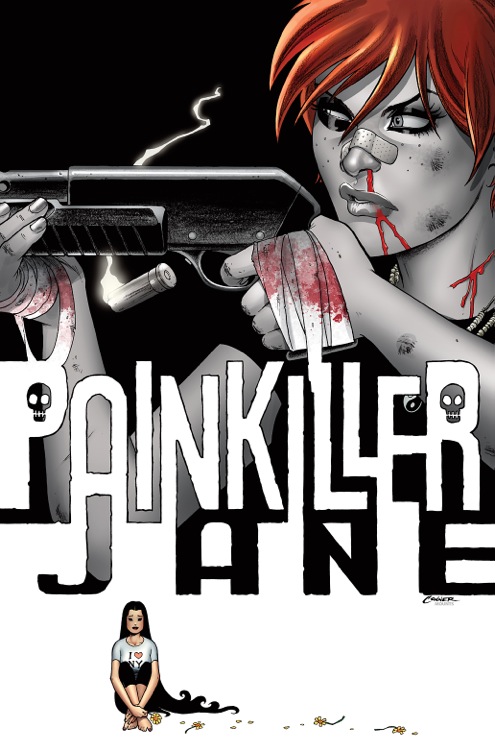
JP: Painkiller Jane and The Monolith are two characters that I probably could never get bored of writing. Jonah Hex holds a special place in my heart and Harley Quinn is the current character I am enjoying. I am always looking forward to new characters and projects as well. I think if you get too comfortable with a creation, it tends to get old and feel old rather quickly. I am very careful about that not happening.
JK: As a writer, regarding film and TV, what gets you more excited … great dialogue or a great story?
JP: Story first, then dialogue. You can have a great story destroyed by dialogue and vice versa in a heartbeat. I am still learning how to trim and edit my own dialogue. This is all a learning process. You begin with a story…so for me, that’s most important.
JK: Video games have really become powerhouses of entertainment. You need only look at the fact that the latest Grand Theft Auto did over a billion dollars in sales in its first three days of release. You’ve written for video games … how would you compare the creative and collaboration process for that versus a comic book or television show.
JP: Comics are easy because it only takes a few to produce. Games are super involved and take years. TV and Film are a group effort that you have to understand that whatever script you hand in will be changed in the process. Comics are a more pure art form, while the others are a group effort. I can never take full credit for anything I work on outside comics since so many other people work on the same thing before it’s finished. That said, comics pay the least, and TV and film the best. Games depend on what specific job you do when hired.
JK: What advice do you have for aspiring and emerging comic artists and writers?
JP: Go to school, take classes in art and writing, learn the craft and stop being comfortable with anything you are doing. Travel the world, fall in and out of love and learn to listen. The secret to success is learning how to fail and make it work for you. Do not give up…get better by doing and stop talking about your work. That’s for others to do.
JK: Who would play you when they make a movie about the life of Jimmy Palmiotti? And who would play your love interest?
JP: Silly as this question is, Joaquin phoenix might be the right guy and my love interest would be Drew Barrymore since she reminds me of Amanda. I am not sure my life would make any kind of film though…Might be too boring to some…maybe a TV movie at best.
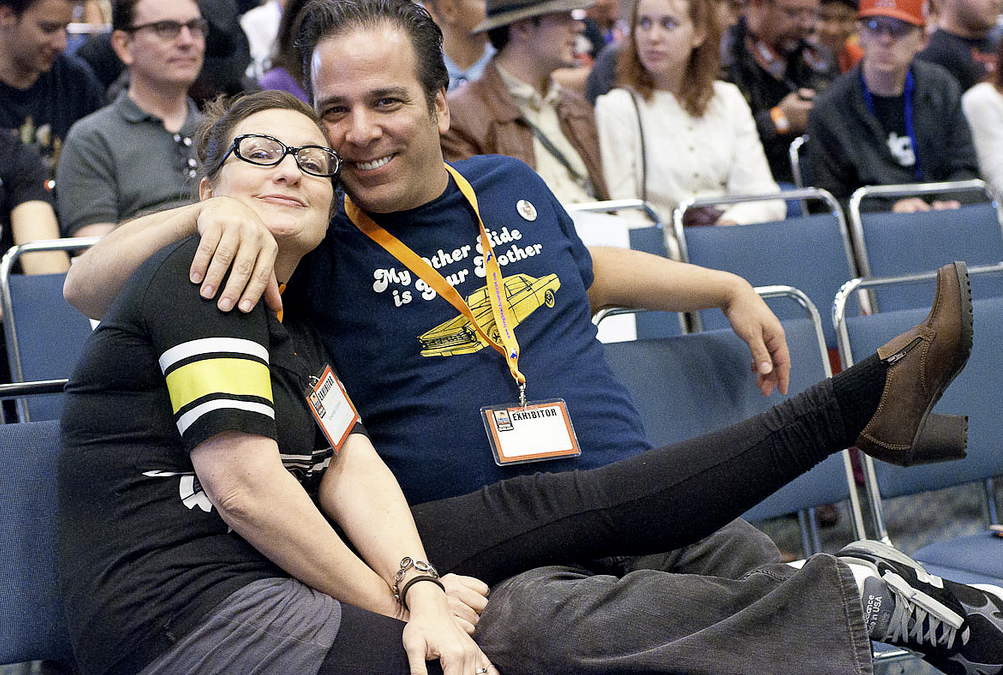
JK: What’s next for Jimmy Palmiotti?
JP: That’s an easy one. Having a TV series based on one of my books, and writing a screenplay and selling it based on another one of my properties. After that is in the works, to keep entertaining people and trying my hand at creating more fun stories and characters. Yeah, I know…I aim high.
You can follow Jimmy on Twitter @JPalmiotti and find digital copies of his work here: PAPERFILMS.com
